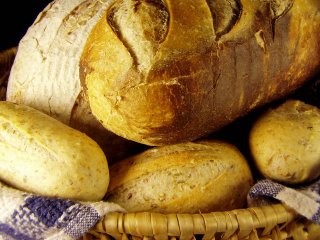 As I had mentioned in a past post, our local bread outlet doubled their prices, due to the rising gas prices. My girlfriend had suggested hitting our local Kroger, which can be a goldmine of deals at the end of the day, for my bread needs. Recently they announced though, that they are now shutting down our Kroger because they were not getting the business that they needed. This not only stinks because of the bread factor, but also because it was the quick place I could run into and get a gallon of milk or the once missing ingredient for our dinners. Kroger- you will be missed on our side of town!
As I had mentioned in a past post, our local bread outlet doubled their prices, due to the rising gas prices. My girlfriend had suggested hitting our local Kroger, which can be a goldmine of deals at the end of the day, for my bread needs. Recently they announced though, that they are now shutting down our Kroger because they were not getting the business that they needed. This not only stinks because of the bread factor, but also because it was the quick place I could run into and get a gallon of milk or the once missing ingredient for our dinners. Kroger- you will be missed on our side of town!
I love to make homemade bread in my bread machine though so I am trying to do this more often. As we speak, I am trying a new recipe for Light Oatmeal Bread and I will let you all know how it turns out. I am testing recipes to find the perfect sandwich bread and this sounded like a yummy alternative to the traditional recipes.
My main problem with homemade bread though is the stale factor. Without the preservatives to sustain the bread, as in our store-bought varieties, how can you keep your bread fresher longer?
I looked to the experts at Cook’s Illustrated for the answers to these questions. One of my main questions was, does bread last longer in the refrigerator or by just leaving it at room temperature? My other question was, what is the most effective way to store your homemade bread?
Cook’s Illustrated ran a test to see which bread loaves lasted the longest, testing temperatures & storage devices. I was very interested to see what the results would be, in particular, if a storage device really preserves the shelf life of the bread longer.
It became quickly evident in their research, that the refrigerator is actually the least effective way to store bread. Retrogradation occurred six times faster in the bread stored in the refrigerator versus the bread stored at room temperature. Although this was not included in their findings, I do believe that room temperature may be worse in some cases depending upon your climate conditions. Those who live in humid conditions may find that bread molds much quicker if left out on the counter, rather than their refrigerator storage methods.
For homemade bread, they did find the most successful way to store the bread was in a twill bag they found on Golda’s Kitchen. This twill bag is both machine & dishwasher safe. The bag is $20, but can be used over and over again. I am thinking that I might try the fabric totes that came with my reuseable grocery bags first, and see if these fabric bags might be the ticket for effective storage.
Homemade bread is much more cost effective than buying store bought bread. Pretty much all of the ingredients needed to make your bread can be purchased in bulk at your local wholesale club. Here are some examples of the pricing on ingredients at our local store (Prices listed are for Sam’s Club in Mishawaka, IN):
Yeast (2 pounds)- $3.87
Bread Flour (25 pounds)- $5.54
All-Purpose Flour (25 pounds)- $5.26
If you buy your flour in bulk, you can store the flour in a large Rubbermaid tote with a lid to keep it fresher longer. I keep my yeast in a Mason jar in our refrigerator door. It has worked really well for me and is always there when I need it.
These are just some of my ideas for making and storing your homemade bread and bread ingredients.
Sound Off: How do you store your homemade bread? Any bread making tips that you have found help with making amazing loaves of bread?